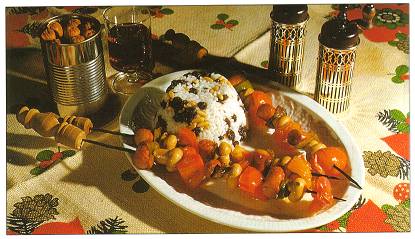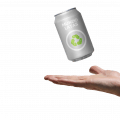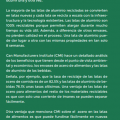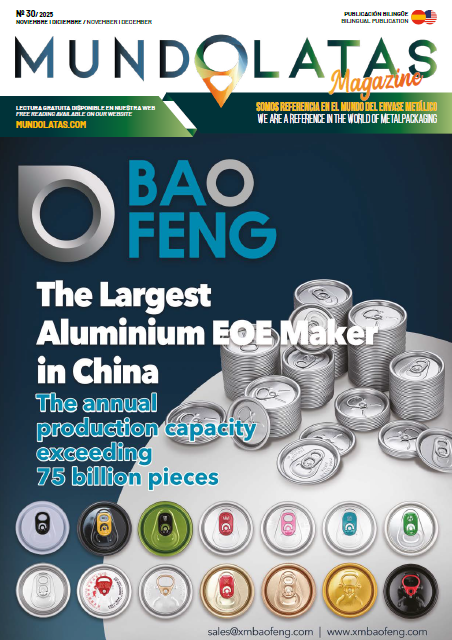Tin cans : utilities
Contrary to what many people believe, canned food has no preservatives, because it does not need them, just as oil and wine do not need them, so the food, be it fish, vegetables or meat, remains pure and unalterable, with all its nutritional, energetic and protein value… as well as all its flavour.
When canned food is opened and not all of it is consumed immediately, it can last for several days, even a week, simply by keeping it in the fridge (not in the freezer).
Sometimes, when cans are opened, the contents blacken. Do not be alarmed. There is absolutely nothing harmful to your health. It is simply that, when it comes into contact with air, the surface of the canned food undergoes an oxidation process that only affects the aesthetic aspect.
Canned food cans will never cause contamination problems. Because the tinplate that the packaging is made of usually comes from coated with an unalterable glaze. And even if it were to flake off and the metal were to rust, the resulting rust is also harmless, The can does not betray.
When you open cans of canned food, don’t throw away the juice in them, because you will throw away most of the nutrient content (protein and vitamins) in the canned food.
Tin cans are a good friend of the housewife. Not only does it save you from rushing to solve a meal quickly, but it also allows you to enjoy produce that is out of season. It also warns if, due to some extraordinary event, the product inside has deteriorated. Specifically, it announces it by bulging, swelling. This has nothing to do with simple dents, the result of knocks suffered during storage or transport.
When you use canned preserves, you can be sure that you are consuming products that retain all their original nutritional power. Curiously, unlike those succulent stews of our grandmothers, which boiled from nine in the morning to three in the afternoon and, for this reason, saw all its vitamin power destroyed.
Is a canned product expensive? Take, for example, the case of tuna. If you buy it fresh from the market, you will have to remove the head, bones, tail and scrape, so you will lose more than a third of the weight. Cook it and you will have lost another third, in addition to the time and energy costs. The can, ready to serve at the table, is certainly more economical.
As long as it remains closed, and that can be for a long time, the cans do not need to be in the fridge. The pantry is enough for you. Thanks to this you can have a huge range of prepared food that does not take up space or money in your fridge (remember that for every cubic centimetre of your fridge you pay for in your electricity bill).
Most of the cans of canned food and soft drinks today have the easy-open system. A few tips to open them comfortably: place the can firmly on a solid surface, lift the ring until it is more than vertical, making sure that the initial crack is as large as possible. Using your thumb as leverage, pull firmly but gently until it is fully open. This is easy.
A distinction should be made between preserves and semi-preserves. The latter are canned foods (e.g. anchovies) that have not undergone the sterilisation process and therefore have a shorter shelf life and should be kept in a cool place (preferably in the refrigerator). But the authentic canned food, that which is contained in a “sanitary” sterilized container, has no such requirement. Its duration is practically unlimited and its guarantee is absolute.
The guarantee in the use of tinned food is reflected in the current sanitary regulations of the different countries regarding expiry dates and food consumption. Canned food does not have an expiry date, but a “best before” date. With this key distinction, the health administrations legally endorse the health guarantee of tin cans over time. The best-before date is simply that: a period of time (three, four years) during which time it is estimated that the canned product should normally have covered the marketing cycle, but without this meaning that its subsequent consumption would have any negative effect from the point of view of health, or even the texture or flavour of the product contained.
Modern man has discovered the enormous usefulness of tin cans and, in general, of any refreshing food or drink in tin cans. Between cans and soft drinks, it is statistically proven that citizens of developed countries open an average of two cans a day. If we add to this the use of other tinplate containers (aerosols for different uses, oil cans or other car products, paint cans, varnishes, etc.) and tinplate lids and closures using containers made of other materials, we can understand the enormous importance of this industry in today’s world.
Partial reproduction of the chapter “Useful advice” of “The book of the can” published by the Spanish Siderurgy and AME. (Spanish Metallographic Association)












0 Comments